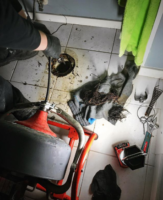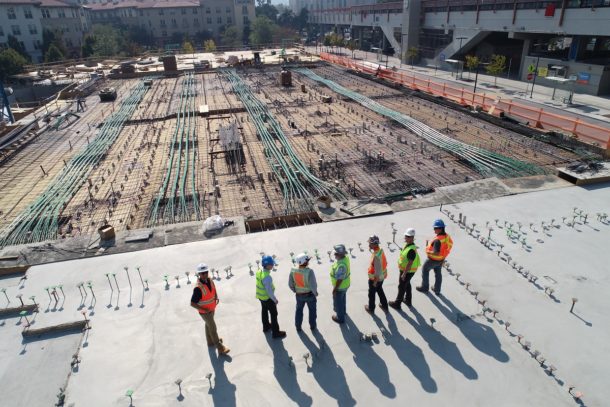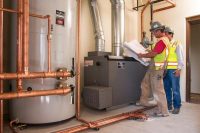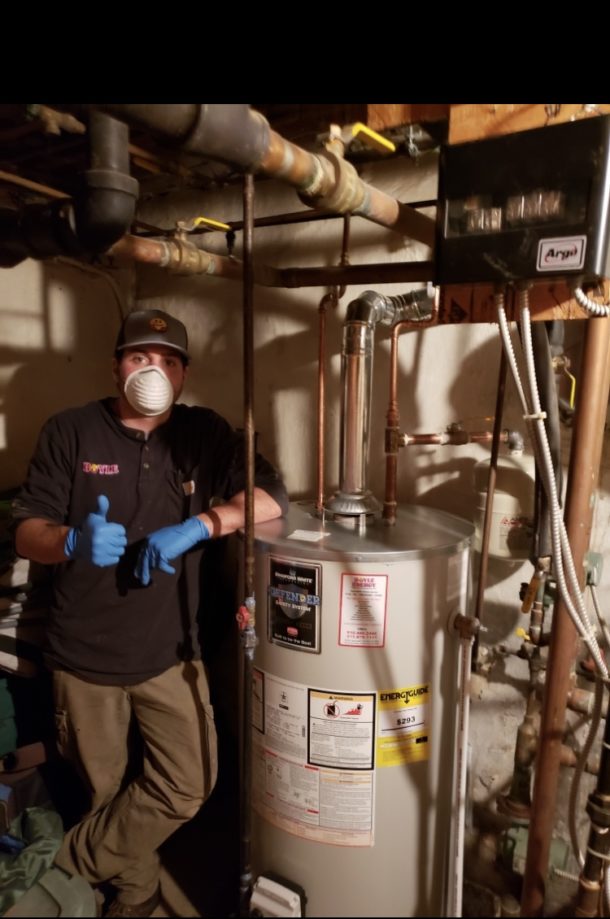Have you been trying to figure out how you can keep your business going even when things seem like they are hopeless? Well, there are plenty of things that you can do in order to make this possible, you just need to know where to look and how to get there. It’s more important than Read more
Industry Blogs
Have you been trying to figure out how you can keep your business going even when things seem like they are hopeless? Well, there are plenty of things that you can do in order to make this possible, you just need to know where to look and how to get there. It’s more important than ever that when things start to rain down on you, that you fight back and show that your business isn’t going anywhere. In this article, that’s exactly what we’re going to be talking about so keep reading down below if you would like to find out more about this.
Think About Your Customers
The first thing that you are going to need to do is think about your customers. Have you ever stopped to really thank them? Ideally, you want to create a loyal customer base wherever you can because these are the people who are always going to come back and stand by you. They will buy from you or use your service whenever they have a need for it, not choosing another business because they feel appreciated by you. You need to keep this up with as many customers as you can in the hopes that it is going to be enough to keep people by your side.
The thing that you will find is that when things start to get tough in the economy as a whole, people are a lot less willing to spend money. You need to make them feel comfortable spending their money with your business, and appreciation is the best way to do it.
Make Sure You Have The Right Suppliers
Another thing that you’re going to have to do is make sure that you have the right suppliers. Your business is going to need certain things in order to make the product you sell or complete the service. For example, if you need something like a butterfly valve, pieces of equipment, or a steady stream of a certain item, you need to make sure you’re getting it from the right place. You don’t want to have to pay a fortune for these things, but they still need to be of a high quality. If they aren’t, then it could jeopardize your entire business.
If you think that you are able to get the same quality product for a lower price, look into this option. At the end of the day, you want to make as much money as possible and changing suppliers could benefit your business in more ways than one.

Is Your Funding Stable?
You want to ask yourself whether your funding source is currently stable. It’s true that you are going to need money if you have any hopes of making money, and don’t let anyone convince you otherwise. Of course, there are a couple of rare exceptions to this, but it’s more often than not the case that you won’t get far on the market if you are broke. It’s for that reason that you have to look at where your money is coming from and decide if it is reliable and can provide what you need.
If you are funding your business yourself, then this is going to be a look at your personal finances. If it’s an investor, you need a written contract. If it’s through crowdfunding, then there is never a guarantee of more money when you need it so be careful. Of course, there are more options, but these are some of the main ones that people use to fund their business.
Create Demand If There Is None
Finally, if there is no demand for your product or service, then it’s time that you made some. Generating demand might not seem like something that you can do, but we promise you it is. All you need to do is focus your marketing efforts, and ensure that people understand why they should buy from you. Let them think they need the product or service, or convince them that they do and they will come to you.
It’s not always possible to generate the right level of demand, but if you keep trying new tactics, we’re sure that you will get there.
We hope that you have found this article helpful, and now see some of the things that you should be doing to keep your business going even when the going gets tough. It’s not always a simple thing to do, and it’s going to require quite a lot of dedication on your part, but we know that your business is worth it to you. We wish you the best of luck, and hope that your business survives all the bad times.

There’s barely an area of the economy that COVID hasn’t reached, and that includes the plumbing industry. Of course, there are areas of business that have actually thrived during the pandemic due to the nature of their business. The initial shut down of some areas caused smaller plumbing companies to shutter, especially those that made Read more
There’s barely an area of the economy that COVID hasn’t reached, and that includes the plumbing industry. Of course, there are areas of business that have actually thrived during the pandemic due to the nature of their business.
The initial shut down of some areas caused smaller plumbing companies to shutter, especially those that made the majority of their income through renovations. But once the initial shock of the pandemic was was over, there has been a rebound in business that has been very specific to this sector.
Here’s how COVID has affected the plumbing industry for better and for worse.
The initial reduction of non-essential work
Throughout the pandemic, people don’t want non-essential people in their homes, potentially spreading the virus. Therefore a lot of bathroom and kitchen renovations have been put on hold.
Of course, emergency visits still continued, with replacements of Grundfos pressure pumps, leaks, and blockages still needing to be tackled. In some areas, the number of emergency visits increased as people stayed at home more. People aren’t going to school or work and are staying together indoors for days at a time, putting immense pressure on plumbing systems.
Businesses were also delaying essential maintenance on their systems due to temporary closure or trying to save money. This is undoubtedly going to lead to much larger issues further down the line as old systems develop big problems.
However, due to many people fearing lack of job security or a reduction in income, house sales have suffered, with people instead deciding to stay put and improve their existing properties by adding toilets or bathrooms.
The risk to workers
As an essential service, plumbers have continued to work throughout the pandemic, giving them greater potential exposure to the virus. In particular, men who are older, or with pre-existing health conditions suffered from the virus more severely than a lot of other groups.
Abandoned buildings need increased attention
Many buildings that are usually occupied have needed additional attention. The lack of use can lead to the failure of seals in the plumbing system which must be replaced to prevent substantial damage to the building.
Customer communication has changed
Large parts of the plumbing industry have been known to be a little behind when it comes to using the latest technology to communicate with customers. To the industry’s credit, it has adapted very quickly, adopting systems like live chat and video calls to conduct initial consultations with clients, thereby reducing the need for unnecessary contact. Beyond the pandemic, these new methods of communication are likely to stick around in some form as customers expect this type of service.
Conclusion
The plumbing industry has not been beyond the reach of the effects of the pandemic and as a number of other trades, has had to adapt to very specific situations brought about by a sudden change in living and working patterns of the country. It’s yet to be seen how some areas will rebound after the restrictions are lifted in many states.

Advanced green building solutions, which include materials that are safer to use and more environmentally friendly, benefit not only the end customer, but also those involved in the construction work. Those who want to be a part of the future, need to know them right now. Companies need to be organized and prepared for the Read more
Advanced green building solutions, which include materials that are safer to use and more environmentally friendly, benefit not only the end customer, but also those involved in the construction work. Those who want to be a part of the future, need to know them right now. Companies need to be organized and prepared for the future. When you consider warehouse organization and layout is deceptively complex, so you need to ensure that you have enough space for your business needs as the green industrial revolution continues- new materials, new equipment will all be key.
Anyone who thought the green approach was a passing fad has discovered in recent years that this is a trend that has no intention of disappearing. Environmental awareness is intensifying and with it come solutions and tools designed to preserve the environment for us and for future generations. The construction industry has played a significant part in the success of this trend, and the term “green construction” is becoming commonplace in the mouths of customers and suppliers alike. Green construction is an approach designed to create a healthier living, working and living environment through the use of non-toxic materials and energy and resource savings, while minimizing the damage caused by manufacturing and transportation processes. The impact of green construction, which begins at the project planning stage and applies to field personnel and the end customer alike, is reflected in the reduction of the carbon footprint and the creation of advanced alternatives to a variety of materials, processes and approaches in the construction industry.

Photo Supplied by Unsplash
In order to ensure uniformity and compliance with the conditions that define a product or service as green, an international standard is being developed, and in fact starting in 2021, the green building standard will become mandatory in many countries. This means that standards and certifications such as green mark, LEED (American certification, which meets green accrual points), LCA (life cycle assessment, which is an assessment of the degree of impact the product or process has on the environment) and others will become mandatory for all construction workers.
A.C. Advanced construction technologies, which provide a wide range of advanced solutions to the construction industry, are working to implement the green approach in the industry even before these standards have become mandatory. The company believes in green construction and the good it brings to the environment, work implementers and all people, and in recent years has increased its activity in the field and expanded its line of green products. The solutions that the company offers, in areas such as sealing, finishing materials, industrial floor coverings, restoration materials, concrete repair and protection and more, express technological innovation, and ensure savings in time, labor and other resources, while maintaining high quality and meeting the most stringent standards.
Green in all colors is the future
The idea behind these new green products is to create advanced and groundbreaking alternatives for the construction industry, with the aim of enabling green construction while maintaining a high and uncompromising construction standard. Be part of the global revolution because it is leading the construction industry in 2021 and there are many industries that are looking into this for the future, including certain airports and car manufacturers. By using sustainable buildings for the future, it allows long term costs to be cut and the future of the planet can be saved.
Green construction is also light construction. Simple methods of thermal insulation for roofs and windows, maximum utilization of wastewater, use of renewable energy sources such as solar and wind along with reducing construction and maintenance costs. This is as a result of in-depth research done in recent years by engineers and green bodies. Compliance with the standard for green construction, allows your home to save about 30% in energy consumption, about 75% in water consumption, recycling construction waste and preserving the quality of the building’s surface. This advanced construction is the future of the construction world. More and more standards related to green building are being enacted into law, public awareness is rising, demand is expected to grow and it is to be hoped that one day the government will also recognize the environmental need for smart construction and subsidize it. It can bring about future jobs, and create a better future for the construction industry. As more and more people follow suit, we will see a huge shift over the next couple of years, for more and more businesses within the industry to become more sustainable.

Green construction focuses on increasing the efficiency of the use of resources in the construction process – energy, water and materials – while reducing the environmental impact of the construction process and the use of the building. In recent years, a new profession has been born – green construction mentors, who are guided directly into Read more
Green construction focuses on increasing the efficiency of the use of resources in the construction process – energy, water and materials – while reducing the environmental impact of the construction process and the use of the building. In recent years, a new profession has been born – green construction mentors, who are guided directly into professional and experienced planning teams. Everyone who has studied the basics of economics understands that the right to exist for a new product in the market is demand. In the absence of taking responsibility for the architects themselves and full control over the details, it led to the creation of training for the green construction lenders and their placement within the planning team as “supervisors” of the architect’s work. There are many ways to implement a sustainable future; from the suppliers you use, the equipment you use and the way in which you plan things, click here for more info.
Action must be taken to promote sustainability in planning. This is a positive statement that expresses general and non-binding empathy with the field of sustainability, the way to create change is to act first within your own industry, then guide others. The architects help in promoting the field of sustainability. The tendency to engage in form rather than content is familiar to everyone involved in the field and for many years we tended to delve deeper into the aesthetic aspects of buildings while closing their eyes on the environmental impact. We can be wrong. We are faced with the expected increase in the eyes of the world and the resulting overcrowding, as well as due to the climate crisis, there is almost no place to place the shape of the building and its aesthetics at the top of the scale. Some countries are leading the way, such as Switzerland and Germany. They are looking into renewable energy and completing the switch by 2030.
Principles of sustainability
The guiding principle in green construction is that long-term thinking and early planning of the environmental aspects of the project, will lead to a higher quality final product, more convenient to use, considerate of natural resources and sometimes even economical in direct costs of operating the structure. Green builders usually seek not only to achieve ecological harmony, but also aesthetic harmony between the building and its natural environment, although it is not always possible to distinguish between a green building and an unsustainable building. The potential for selling green buildings, and when living in them, will not save expenses Not only for electricity and water, but also for health.
The criteria that define a green building are proper design of the building structure for maximum utilization of solar heat, thermal insulation of the building envelope, use of building materials and furniture that do not emit volatile organic compounds, installation of water-saving accessories, use of recycled materials. Also, of course, the installation of efficient systems for heating and cooling the building. Many countries have developed their own standards of energy efficiency for buildings. It’s time to look into the future, because the profits all begin with a sustainable future.

Let’s face it. The way that Americans shop has changed. The COVID-19 pandemic has been a boon to online retailers and delivery services. Consumers who are leery about walking into a store will buy online for delivery or order it for curbside pickup. You and your family members probably ordered something online today. There’s a Read more
Let’s face it. The way that Americans shop has changed. The COVID-19 pandemic has been a boon to online retailers and delivery services. Consumers who are leery about walking into a store will buy online for delivery or order it for curbside pickup. You and your family members probably ordered something online today. There’s a temptation to let that drift into your professional life as well, but it may not work for securing the brands or quality of products that you are used to securing and providing to your customers.
Plumbing wholesalers must acknowledge that home improvement retailers are not going to go away. But both plumbing wholesalers and plumbing contractors must realize that they, themselves, are offering their customers so much more than a product. Anybody can offer a product for sale but wholesalers and contractors succeed by offering services that the competition either cannot or will not offer.
The big box stores are doing their best to offer services and incentives that mimic those offered by plumbing wholesalers. The issue for now, however, is they can only offer these in a general, corporate way, while the local wholesaler takes great pride in knowing the personality and needs of its contractor customers. A wholesaler knows who those contractors are, what their specialties are, what they want. They know what their customers buy, and they don’t have to look it up in their computer records because they and their counter people have an ongoing business relationship with their contractors. They interact with contractors and their plumbers all the time and deliver to their shops or jobsites.
Another avenue for wholesalers to create relational equity and provide value is to provide on-site training, by leveraging manufacture resources. Heating and plumbing manufacturers and wholesalers realize that one of the best ways to form lasting relationships with contractors is to offer technical training. Contractors will sell products with which they are familiar and comfortable; that’s how they make a profit. If a product is difficult or confusing to install or results in call-backs, they won’t sell it. Homeowners are doing their homework online on space and water heating systems and, while they are well-informed, they certainly don’t know as much as contractors. Contractors must be able to demonstrate a thorough knowledge of their products so that they can discuss, with confidence, why their customers should want to buy what they’re selling.

The way to get that recommendation is through training. Plumbing wholesalers should be set up to offer training, both in-person and virtually. Most training has become virtual because of COVID-19 and we will undoubtedly see some of that continue in the years ahead. It’s incumbent on wholesalers to have the equipment to record video training or to livestream training to their customers. But they should also invest in a proper classroom setup in their facilities in which manufacturers’ trainers and reps can conduct in-person training.
Distributors should emphasize the inventory management and financing services that they offer. They can help contractors keep up with code changes and changes to licensing requirements in their area. They can inform contractors about manufacturers’ rebate offers or give them advice on postcard mailings and other marketing tactics. Everything you do and every bit of information you can provide to help your contractors creates that level of “stickiness” that makes it hard for them to want to go elsewhere.
When thinking about the differences between a local plumbing wholesaler and a big box store, contractors should think about the differences between themselves and a big box store. Any homeowner can walk into a big box store and buy plumbing products. Some will install what they buy on their own and others will reach out to their handy friend. The biggest trend here, however, is that consumers are walking into the box store to buy their plumbing and HVAC needs and the installation that goes with it. It’s one-stop shopping for the consumer. The box stores have swung away to a degree from the DIYers and have now positioned themselves as the seller and installer for today’s consumers.
But what wholesalers offer is individualized support and personal relationships. When one of a contractor’s customers has an emergency on a Saturday night, the contractor has the cell phone number of the wholesaler manager who’s going help them get the replacement equipment they need. Some wholesalers even have formal 24×7 programs to address both residential and commercial emergency installations or repairs. Try doing that through a big box store. And when it comes to a homeowner installing his new bathroom or kitchen, some wholesalers have showrooms they can walk through to find unique fixtures that they will never be able to get in a retail environment.
Bradford White continues to count on wholesale distribution to support the professional specification and installation of its products. Our distributors bring a level of service and support to the equation that keeps contractors coming back and helps them better serve the end-user.
 GUEST BLOG BY: Matt Kozak, Vice President – Sales for Bradford White Water Heaters.
GUEST BLOG BY: Matt Kozak, Vice President – Sales for Bradford White Water Heaters.
A graduate of Loyola College in Baltimore, Matt joined Bradford White in 2007 as a regional sales manager in the southeast.
He progressed to become director of sales for the Eastern U.S. and now oversees sales management and business development teams as vice president of sales for the U.S.
Matt has been actively involved in industry organizations such as the American Supply Association (ASA) and the Association of Independent Manufacturers’/Representatives, Inc. (AIM/R).
